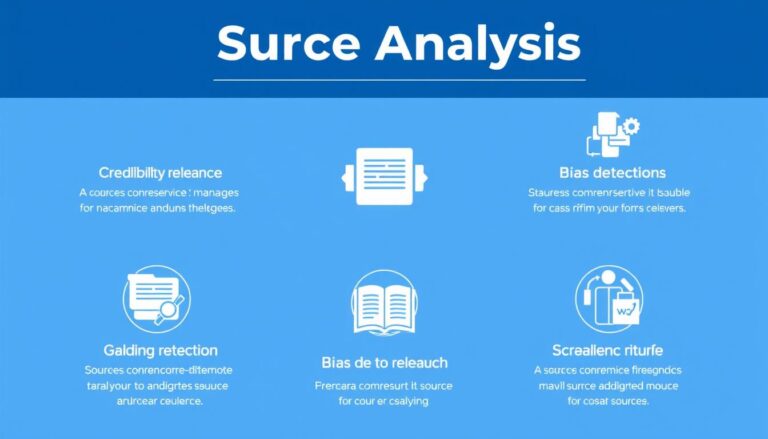Following a proper research paper structure guide is essential for academic success. Whether you’re writing your first college paper or your tenth, understanding the fundamental organization of research papers helps you communicate your ideas clearly and earn better grades. This comprehensive guide breaks down each section of a research paper, provides formatting tips, and offers practical advice for creating well-structured academic work.
Research papers form the backbone of academic discourse, allowing students to demonstrate their understanding of a topic while contributing to scholarly conversations. However, many students struggle with organizing their thoughts and research into a coherent, logical structure that meets academic standards.
Why a Research Paper Structure Guide Matters
The standard structure of a research paper helps organize complex information
A well-structured research paper does more than just present information—it guides readers through your thinking process and helps them understand the significance of your findings. Following a research paper structure guide ensures your work is:
- Logically organized with a clear flow of ideas
- Comprehensive in covering all necessary components
- Properly formatted according to academic standards
- Easy for professors to evaluate against rubric requirements
- More likely to effectively communicate your research findings
According to the Purdue Online Writing Lab, properly structured papers help readers follow complex arguments and understand the relationships between different pieces of evidence. When you organize your paper effectively, you demonstrate not just knowledge of your topic, but also mastery of academic communication.
Core Sections of a Research Paper
Every research paper follows a similar overall structure, though specific requirements may vary depending on your discipline and instructor preferences. Here’s a breakdown of the essential components in a standard research paper:

Title Page
Your title page is the first impression readers have of your work. It typically includes:
- Paper title (clear, concise, and reflective of your research)
- Your name and institutional affiliation
- Course information and instructor’s name
- Due date
- Running head (in APA format)
Different citation styles have specific formatting requirements for title pages. For example, APA style requires a running head, while MLA typically incorporates the title information on the first page of text.
Abstract
The abstract provides a concise summary of your entire paper in 150-250 words. It should:
- State your research question or thesis
- Briefly describe your methodology
- Summarize key findings
- Indicate the significance of your research
Write your abstract last, after completing all other sections of your paper. This ensures it accurately reflects the content and findings of your research.
Introduction
Your introduction sets the stage for your research paper by providing context and establishing the importance of your topic. A strong introduction:
- Hooks the reader with an engaging opening
- Provides background information on your topic
- Clearly states your thesis or research question
- Outlines the structure of your paper
“The introduction is your opportunity to show readers why your research matters. It should answer three questions: What are you studying? Why is it important? How will you approach it?”
Literature Review
The literature review demonstrates your knowledge of existing research on your topic. This section:
- Summarizes relevant previous studies
- Identifies patterns, gaps, or contradictions in existing research
- Explains how your research contributes to the field
- Establishes theoretical frameworks that inform your study
Organize your literature review thematically rather than simply listing studies chronologically. This approach helps readers understand how different aspects of previous research relate to your work.
Methodology
The methodology section explains how you conducted your research, allowing others to evaluate or replicate your work. Include:
- Research design and approach
- Participants or subjects (if applicable)
- Materials, instruments, or tools used
- Procedures followed
- Data analysis methods
Be specific and detailed in your methodology. For example, rather than stating “surveys were distributed,” explain how they were distributed, to whom, when, and how many responses were received.

Methodology and results sections require different approaches to presentation
Results
The results section presents your findings without interpretation. This section:
- Reports data and observations objectively
- Uses tables, figures, and graphs to illustrate findings
- Organizes results logically (often by research question)
- Highlights significant findings without discussing implications
When presenting numerical data, consider which format (tables, graphs, charts) will most clearly communicate your findings. Remember that all figures and tables should be labeled and referenced in the text.
Discussion
The discussion section interprets your results and explains their significance. Here you should:
- Explain what your results mean in relation to your research question
- Compare your findings to previous research
- Address unexpected results or limitations
- Discuss implications for theory or practice
- Suggest directions for future research
This section transforms raw data into meaningful insights. Avoid simply restating results; instead, focus on explaining why your findings matter and how they contribute to your field.
Conclusion
Your conclusion wraps up your paper by synthesizing your main points and emphasizing the importance of your research. An effective conclusion:
- Restates your thesis (in new words)
- Summarizes key findings
- Emphasizes the significance of your research
- Ends with a strong closing statement
Avoid introducing new information in your conclusion. Instead, focus on reinforcing the importance of what you’ve already presented.
References/Bibliography
The references section lists all sources cited in your paper. Formatting depends on your required citation style (APA, MLA, Chicago, etc.). Regardless of style, your references should:
- Include all sources cited in your paper (and only those sources)
- Follow consistent formatting according to your citation style
- Be arranged alphabetically by author’s last name (in most styles)
- Provide complete publication information
Citation management tools like Zotero can help you organize sources and generate properly formatted citations and bibliographies.

Properly formatted references are essential for academic integrity
Creating an Effective Research Paper Outline
Before writing your first draft, creating a detailed outline helps organize your thoughts and research. A good research paper structure guide always emphasizes the importance of outlining.

A well-organized outline makes the writing process more efficient
5-Step Outline Template
- Brainstorm main topics – List all major points related to your thesis
- Organize hierarchically – Arrange topics into main sections and subsections
- Add supporting evidence – Note specific research, quotes, and data under each point
- Sequence logically – Arrange sections in the most effective order
- Review for completeness – Ensure all aspects of your thesis are addressed
Pro Tip: Use alphanumeric formatting for your outline (I, A, 1, a, i) to clearly show the relationship between ideas and create a visual hierarchy of information.
Your outline should be detailed enough to guide your writing but flexible enough to accommodate new insights that emerge during the writing process. Consider creating a reverse outline after writing your first draft to check for logical flow and organization.
Essential Formatting Rules for Research Papers
Different academic disciplines follow different citation styles, each with specific formatting requirements. Here’s a comparison of the three most common styles:
| Element | APA Style | MLA Style | Chicago Style |
| Title Page | Required, with running head | Not required, header on first page | Required |
| Font | 12pt Times New Roman, Calibri, or similar | 12pt Times New Roman or similar | 12pt Times New Roman |
| Line Spacing | Double-spaced | Double-spaced | Double-spaced |
| Margins | 1 inch on all sides | 1 inch on all sides | 1 inch on all sides |
| In-text Citations | Author-date: (Smith, 2020) | Author-page: (Smith 42) | Footnotes or author-date |
| Bibliography Title | References | Works Cited | Bibliography |

Understanding citation style differences is crucial for proper formatting
Regardless of citation style, all research papers should follow these general formatting guidelines:
- Use standard 8.5 x 11 inch paper
- Include page numbers (position varies by style)
- Use consistent paragraph indentation
- Maintain consistent heading formatting
- Follow specific rules for tables, figures, and appendices
Always check your assignment guidelines or course syllabus for specific formatting requirements, as instructors may have preferences that differ from standard style guides.
Common Research Paper Structure Mistakes to Avoid

Avoiding common structural mistakes improves the quality of your research paper
Structural Issues
- Weak thesis statement that doesn’t guide the paper
- Disconnected sections without clear transitions
- Imbalanced content (e.g., overly long literature review)
- Missing required sections like methodology or discussion
- Poor paragraph structure with multiple ideas per paragraph
Content Problems
- Introducing new ideas in the conclusion
- Failing to connect evidence to your thesis
- Mixing results and discussion inappropriately
- Inadequate literature review that misses key sources
- Overusing direct quotes instead of synthesizing information
Warning: Inconsistent citation formatting is one of the most common mistakes in student research papers. Choose one citation style and apply it consistently throughout your paper.
According to a study from the Colorado State University Writing Center, structural issues account for approximately 40% of grade deductions in undergraduate research papers. Taking time to properly organize your paper can significantly improve your grade.
Practical Tips for Organizing Your Research Paper

Effective organization strategies make the writing process more manageable
Before Writing
- Create a detailed outline with main points and supporting evidence
- Organize your research materials by section
- Develop a writing schedule with specific goals for each session
- Create a thesis statement that clearly guides your paper’s direction
- Identify key transitions between major sections
During Writing
- Write the introduction last to ensure it accurately reflects your paper
- Use topic sentences to begin each paragraph
- Include transition sentences between paragraphs and sections
- Keep your thesis statement visible while writing to maintain focus
- Track your sources carefully to avoid citation issues later
After Writing
- Create a reverse outline from your draft to check organization
- Read your paper aloud to identify flow issues
- Have someone else review your structure and organization
- Check that each paragraph supports your thesis
- Ensure your conclusion synthesizes rather than summarizes
“The secret to good writing is good organization. A well-structured paper guides readers through complex ideas with clarity and purpose.”
Digital Tools for Research Paper Organization
Modern technology offers numerous tools to help you structure and organize your research paper effectively:

Digital tools can streamline the research paper writing process
Outlining Tools
- Workflowy – Hierarchical bullet point organization
- OmniOutliner – Detailed outlining with multiple columns
- Microsoft OneNote – Free-form organization with sections
Citation Managers
- Zotero – Free, open-source reference management
- Mendeley – Reference manager with PDF annotation
- EndNote – Comprehensive citation management
Writing Assistants
- Grammarly – Grammar and style checking
- Hemingway Editor – Readability improvement
- ProWritingAid – Comprehensive writing analysis
Using these tools can help you maintain consistent formatting, organize your research, and ensure your paper follows proper research paper structure guidelines. Many university libraries offer free access to premium versions of these tools—check with your institution’s resources.
While digital tools are helpful, they don’t replace understanding the fundamental principles of research paper organization. Use them to enhance your writing process, not as a substitute for learning proper structure.
Discipline-Specific Research Paper Structure Variations
While the basic research paper structure guidelines apply across disciplines, different fields have unique expectations and conventions:

Research paper structure varies across academic disciplines
| Discipline | Structural Emphasis | Common Sections | Citation Style |
| Humanities | Argument development and textual analysis | Introduction, thesis, body (organized thematically), conclusion | MLA, Chicago |
| Social Sciences | Methodology and evidence-based conclusions | Abstract, introduction, literature review, methodology, results, discussion, conclusion | APA, Chicago |
| Natural Sciences | Experimental process and data analysis | Abstract, introduction, materials/methods, results, discussion, conclusion | APA, CSE |
| Business | Problem-solving and practical applications | Executive summary, introduction, analysis, recommendations, implementation | APA, Harvard |
Always consult your instructor or department guidelines for specific expectations in your field. Some disciplines may require additional sections like theoretical frameworks, case studies, or policy implications.
“The structure of academic writing reflects the structure of thought in each discipline. Understanding these conventions helps students participate in disciplinary conversations.”
Conclusion: Mastering Research Paper Structure
Following a proper research paper structure guide is essential for academic success. By understanding the purpose and organization of each section, you can create research papers that effectively communicate your ideas and meet academic standards.

A well-structured research paper demonstrates academic competence
Remember these key takeaways:
- Start with a clear thesis statement that guides your entire paper
- Create a detailed outline before writing to organize your thoughts
- Follow the standard sections appropriate for your discipline
- Maintain consistent formatting according to your required citation style
- Use transitions to create flow between sections and paragraphs
- Revise for structural issues before focusing on grammar and spelling
With practice, the process of structuring research papers becomes more intuitive. Each paper you write builds your skills and confidence in academic writing.
Still have questions about research paper structure?
Ask in the comments below or check with your university’s writing center for personalized assistance. Remember that good structure is the foundation of effective academic writing.
Frequently Asked Questions About Research Paper Structure
How long should each section of my research paper be?
Section length varies by paper length and discipline. As a general guideline for a 10-page paper: introduction (1 page), literature review (2-3 pages), methodology (1-2 pages), results (2 pages), discussion (2-3 pages), and conclusion (1 page). Adjust proportionally for shorter or longer papers.
Should I write my introduction first or last?
Many experienced researchers write a rough introduction first to guide their work, but then revise it substantially after completing the paper. This ensures the introduction accurately reflects the content and findings of your research.
How do I know which citation style to use?
Your assignment guidelines or course syllabus should specify the required citation style. If not stated, ask your instructor or follow the convention in your field (e.g., MLA for humanities, APA for social sciences, Chicago for history).
Do all research papers need an abstract?
Not all research papers require an abstract. Abstracts are typically required for longer papers, journal submissions, and in disciplines that follow APA style. Check your assignment guidelines or ask your instructor if you’re unsure.
How can I improve the flow between sections of my paper?
Use transition sentences at the end of each section to connect to the next section. These sentences should explain how the upcoming section relates to what you’ve just discussed. Also, use consistent terminology and refer back to your thesis throughout the paper.





